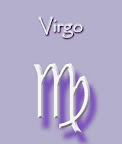There are four great festivals of the Pagan. The two greatest of these are Halloween (the beginning of winter) and May Day (the beginning of summer). Being opposite each other on the wheel of the year, they separate the year into halves. Halloween (also called Samhain) is the Spiritual New Year and is generally considered the more important of the two, though May Day runs a close second. Indeed, in some areas it is considered the great holiday.
Bealtaine ushers in the fifth month of the modern calendar year, the month of May. This month is named in honor of the goddess Maia, originally a Greek mountain nymph, later identified as the most beautiful of the Seven Sisters, the Pleiades. By Zeus, she is also the mother of Hermes, god of magic. Maia's parents were Atlas and Pleione, a sea nymph.
The old Celtic name for May Day is Beltane (in its most popular Anglicized form), which is derived from the Irish Gaelic 'Bealtaine' or the Scottish Gaelic 'Bealtuinn', meaning 'Bel-fire', the fire of the Celtic god of light (Bel, Beli or Belinus). He, in turn, may be traced to the Middle Eastern god Baal.
Actual Bealtaine celebration begins on sundown of the preceding day, April 30, because the Celts always figured their days from sundown to sundown. And sundown was the proper time for Druids to kindle the great Bel-fires on the tops of the nearest beacon hill (such as Tara Hill, Co. Meath, in Ireland). These 'need-fires' had healing properties, and sky-clad Witches would jump through the flames to ensure protection.
Frequently, cattle would be driven between two such bon-fires (oak wood was the favorite fuel for them) and, on the morrow, they would be taken to their summer pastures.
Other May Day customs include: walking the circuit of one's property ('beating the bounds'), repairing fences and boundary markers, processions of chimney-sweeps and milk maids, archery tournaments, morris dances, sword dances, feasting, music, drinking, and maidens bathing their faces in the dew of May morning to retain their youthful beauty.
In the words of Witchcraft writers Janet and Stewart Farrar, the Bealtaine celbration was principly a time of '...unashamed human sexuality and fertility.' Such associations include the obvious phallic symbolism of the Maypole and riding the hobby horse. Even a seemingly innocent children's nursery rhyme, 'Ride a cock horse to Banburry Cross...' retains such memories. And the next line '...to see a fine Lady on a white horse' is a reference to the annual ride of 'Lady Godiva' though Coventry. Every year for nearly three centuries, a sky-clad village maiden (elected Queen of the May) enacted this Pagan rite, until the Puritans put an end to the custom.
The Puritans, in fact, reacted with pious horror to most of the May Day rites, even making Maypoles illegal in 1644. They especially attempted to suppress the 'greenwood marriages' of young men and women who spent the entire night in the forest, staying out to greet the May sunrise, and bringing back boughs of flowers and garlands to decorate the village the next morning.
Some of these customs seem virtually identical to the old Roman feast of flowers, the Floriala, three days of unrestrained sexuality which began at sundown April 28th and reached a crescendo on May 1st.
There are other, even older, associations with May 1st in Celtic mythology. According to the ancient Irish 'Book of Invasions', the first settler of Ireland, Partholan, arrived on May 1st; and it was on May 1st that the plague came which destroyed his people. Years later, the Tuatha De Danann were conquered by the Milesians on May Day. In Welsh myth, the perenial battle between Gwythur and Gwyn for the love of Creudylad took place each May Day; and it was on May Eve that Teirnyon lost his colts and found Pryderi. May Eve was also the occasion of a fearful scream that was heard each year throughout Wales, one of the three curses of the Coranians lifted by the skill of Lludd and Llevelys.
Due to various calendrical changes down through the centuries, the traditional date of Bealtaine is not the same as its astrological date. This date, like all astronomically determined dates, may vary by a day or two depending on the year. However, it may be calculated easily enough by determining the date on which the sun is at 15 degrees Taurus (usually around May 5th). British Witches often refer to this date as Old Bealtaine, and folklorists call it Bealtaine O.S. ('Old Style'). Some Covens prefer to celebrate on the old date and, at the very least, it gives one options. If a Coven is operating on 'Pagan Standard Time' and misses May 1st altogether, it can still throw a viable Bealtaine bash as long as it's before May 5th. This may also be a consideration for Covens that need to organize activities around the week-end.
This date has long been considered a 'power point' of the Zodiac, and is symbolized by the Bull, one of the 'tetramorph' figures featured on the Tarot cards, the World and the Wheel of Fortune. (The other three symbols are the Lion, the Eagle, and the Spirit.) Astrologers know these four figures as the symbols of the four 'fixed' signs of the Zodiac (Taurus, Leo, Scorpio, and Aquarius), and these naturally align with the four Great Sabbats of Witchcraft. Christians have adopted the same iconography to represent the four gospel-writers.
But for most, it is May 1st that is the great holiday of flowers, Maypoles, and greenwood frivolity.
I can not remember where I obtained this article many many years ago. In my youth I was never good about noting where I found things when searching online... Also, this article has been changed in someways to depict it closer to how I perceive this Sabbat. I did not originally create this peice and I do not claim it to be mine, however over the years I have altered them, if you know of the original source, I'd be more than happy to link to and cite them.






Hello Sweet Pea. I came to say hello and I will have to come back for the info on MayDay? Do you still have my e-mail add?
ReplyDelete:) Me..Hee...Heee..Lyn
i believe we're still friends on facebook.
ReplyDelete